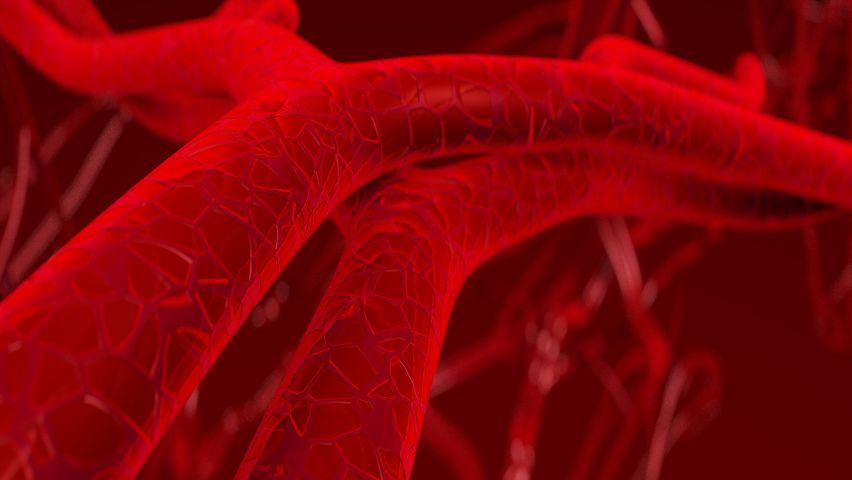It might not seem obvious that there are several key differences between arteries vs. veins, but there are. The vascular system is complex and intriguing, and it is made up of blood and lymph vessels, which carry blood and lymphatic fluid throughout the body. The three main types of blood vessels are arteries, veins, and capillaries.1
Are you wondering, “What is the function of arteries and veins?” If so, you’ve come to the right place. Healthy, strong arteries and veins prevent a variety of circulation issues. If you are concerned about how to maintain arterial health, talk to one of our renowned vascular doctors at USA Vascular Centers.
What Is an Artery?
An artery is a blood vessel that carries oxygen-rich blood away from the heart to distribute it to the body. Rather than being passive tunnels that carry blood, however, arteries are dynamic tubes that can expand and contract to accommodate blood as it pumps from the heart at varying pressures. This is the reason for one main difference between arteries and veins: arteries are much thicker than veins.2
Arteries are composed of three layers: the inner layer, which is made up of smooth tissue cells; the middle layer, which consists of smooth muscle and elastic fiber; and the outer layer, formed by connective tissue.2
There are many major arteries in the body, including the aorta, the pulmonary artery, the renal artery, and the femoral artery. Each major artery breaks down into smaller arteries that become even smaller. The smaller arteries are called arterioles, and they take the blood to the capillaries.3 These blood vessels are so small that they can only be seen under a microscope. Capillaries have porous walls, allowing them to distribute oxygenated nutrients from the blood to tissues throughout the body.3
What Is a Vein?
Veins are tube-shaped vessels that carry deoxygenated blood back to the heart. Once the capillaries distribute nutrients and oxygen, they feed the deoxygenated blood into tiny venules, which become veins, growing larger as they approach the heart.4 Veins have the same three layers that arteries do, but when comparing arteries vs. veins, veins have much less smooth muscle and connective tissue, making them thinner than arteries.5 This is another key distinction between arteries vs. veins.
Functions of Arteries and Veins
The function of arteries and veins differs in that arteries do not have valves, except for the pulmonary artery. This is one of the biggest differences between arteries vs. veins. In addition, arteries are located deep within muscles throughout the body.
Because veins are less thick and rigid than arteries, they can hold more blood. Veins hold about 70% of the body’s total blood volume at any given moment.5 Unlike arteries (aside from the pulmonary artery), veins have valves. These valves keep the blood moving in the correct direction. Another difference between arteries and veins is that veins are typically located closer to the skin’s surface than arteries.
Common Arterial and Vein Disorders
There are several issues that can cause the function of arteries and veins to diminish. Common arterial disorders include peripheral artery disease (PAD), coronary artery disease (CAD), renal vascular disease, and carotid artery disease.
The most notable venous diseases include blood clots, deep vein thrombosis (DVT), chronic venous insufficiency, varicose and spider veins, and venous ulcers.6 While there are many notable differences between arteries vs. veins, some of the same risk factors can lead to arterial and vein disorders: smoking, diabetes, age, and obesity, to name a few.
Peripheral Artery Disease and Poor Blood Circulation
Coronary artery disease rightfully receives a lot of attention in the medical world, but peripheral artery disease is also important. According to the CDC, around 6.5 million people in the United States have PAD.8 Peripheral artery disease occurs when the arteries leading to the lower extremities become blocked due to plaque buildup (atherosclerosis). PAD is a disease that impacts arteries vs. veins.
The lower extremities begin to suffer because poor blood circulation leads to the muscles and tissues in the legs, feet, and ankles. One of the early signs of PAD is intermittent claudication, the term used to describe leg muscles that cramp or ache during exercise and disappear when a person is at rest. In advanced PAD, you may notice slowed toenail growth, a loss of hair on your legs, or changes in skin color or temperature.
Left untreated, PAD can reduce blood circulation to the point that the muscles of the lower extremities are constantly starved for oxygen and nutrients. This can lead to serious complications, such as late-stage PAD, called critical limb ischemia. Critical limb ischemia denotes a severe blockage of blood flow to the lower extremities and can result in amputation if the underlying atherosclerosis is left untreated.
How to Keep Arteries and Veins Healthy
Whether we’re talking about arteries vs. veins, one of the simplest ways to help keep your vascular system healthy is to make lifestyle changes to help lower your risk of vascular disease. If you smoke, consider quitting. If you live a sedentary lifestyle, start walking several times a week. Talk to your doctor about nutrition and if you struggle to maintain a healthy weight.
High cholesterol and high blood pressure can also lead to both arterial and venous disease, so ask your doctor how often you should be screened for these conditions to help manage your risk of vascular disease.
Treatment
Those who are worried they may have peripheral artery disease should seek help from a vascular doctor. At USA Vascular Centers, our knowledgeable vascular doctors can treat peripheral artery disease with minimally invasive procedures designed to open narrowed arteries. Our vascular doctors are skilled at performing angioplasty, stent placement, and atherectomy procedures.
In an angioplasty, the doctor inserts a balloon-tipped catheter into the vascular system, locates blockages, and inflates the balloon to compress the plaque against the artery wall and open the arterial passageway. A stent placement includes the added step of placing a mesh stent inside the artery. During an atherectomy, the plaque is removed using a catheter and a laser or tiny blade.
Each of these non-surgical procedures can be completed in one of our state-of-the-art outpatient centers—and you can go home the same day!
Schedule a Consultation With USA Vascular Centers
At USA Vascular Centers, our vascular doctors can diagnose and treat PAD, helping you get your arteries healthy to get back to your favorite activities. You can also ask your doctor more about the function of arteries and veins and how to keep your entire vascular system in good shape.
Schedule a consultation or call us at 888.773.2193 today to begin the road to improved vascular health.
Sources Cited
[1] “Overview of the Vascular System.” Johns Hopkins Medicine. Accessed April 4, 2022. https://www.hopkinsmedicine.org/health/conditions-and-diseases/overview-of-the-vascular-system.
[2] Histology of blood vessels. Accessed April 4, 2022. https://www2.victoriacollege.edu/dept/bio/belltutorials/histology%20tutorial/blood%20vessels/histology_of_blood_vessels.html.
[3] “Blood Vessels, Arteries, Capillaries, Veins, Vena Cava, Central Veins.” LHSC. Accessed April 4, 2022. https://www.lhsc.on.ca/critical-care-trauma-centre/blood-vessels-arteries-capillaries-veins-vena-cava-central-veins.
[4] Nicola, Stephanie. “Artery vs Vein vs Capillary: What Are the Different Types of Blood Vessels?” WebMD. WebMD. Accessed April 4, 2022. https://www.webmd.com/heart/difference-between-arteries-veins-capillaries.
[5] “Classification & Structure of Blood Vessels.” Classification & Structure of Blood Vessels | SEER Training. Accessed April 4, 2022. https://training.seer.cancer.gov/anatomy/cardiovascular/blood/classification.html .
[6] “Vascular Disease.” MedlinePlus. U.S. National Library of Medicine, January 21, 2022. https://medlineplus.gov/vasculardiseases.html.

